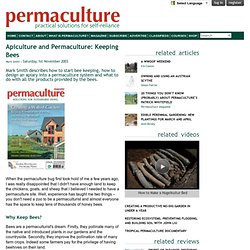

Urban Bees Hive Talking. Is there a beekeeper near me?

We have been asked many times from aspiring beekeepers if we know of beekeepers in their area. This has led us to create a way of mapping the locations of existing and aspiring beekeepers. The 'Hive Talking' map has different coloured markers identifying people who want to offer their land and for people who want to learn - wannabees. If you are already a beekeeper and are willing to show new comers what a colony looks like you could mark the location of your hive and include contact details. Or if you want to be a beekeeper and are looking for a someone near you to team up with place a marker in the map with your contact details.
There are two maps one for entering your location and one for viewing the map with all the locations. We are grateful to the Co-operative's Plan-Bee who helped us with 'Hive Talking'. Untitled. National Wildflower Centre. Fann Street Wildlife Garden EC2. Fann Street Wildlife Garden is one of the private residents' gardens on the Barbican Estate and is recognised as a Site of Importance for Nature Conservation.

It is a vital open space that provides a green corridor for wildlife movement in, around, and through the City. The garden, which is mainly funded by Barbican Estate residents, is actively managed on behalf of the Barbican Estate by the Barbican Wildlife Group (BWG) and City Gardens. Our two core objectives are to create a richly diverse wildlife garden by increasing the number of habitats and to increase residents' enjoyment of their wildlife garden. The garden consists of a wildflower meadow, two bee-and-butterfly friendly gardens (a traditional cottage garden and a sunny, dry garden), a wildlife pond and a number of different wooded areas. The garden also contains a number of insect habitats, plus bird feeders and bird boxes.
This garden is open for OGSW by the volunteers on behalf of the Estate Office. Cowsystems.com. Beekeeping in cities. It's about keeping bees in an urban setting.

This may mean a small garden, roof terrace, or an allotment. Beekeeping doesn't need to be the reserve of the country folk and you don't need a huge amount of space to keep them. It is possible to have bees in the city and you know what... the honey is gorgeous because our urban honeybees have such a variety of plants and flowers to choose from. Each of the city gardens are as unique as their owners and the bees just love the variety. Skip to top Honeybees have been having a hard time. Bees seem to do well in an urban environment where there is a rich diversity of plants, flowers and trees in our gardens, railway sidings, roads and disused pieces of land. They are also a great way to reconnect urban dwellers with nature. Apiculture and Permaculture: Keeping Bees. When the permaculture bug first took hold of me a few years ago, I was really disappointed that I didn't have enough land to keep the chickens, goats, and sheep that I believed I needed to have a permaculture site.

Well, experience has taught me two things – you don't need a zoo to be a permaculturist and almost everyone has the space to keep tens of thousands of honey bees. Why Keep Bees? Bees are a permaculturist's dream. Firstly, they pollinate many of the native and introduced plants in our gardens and the countryside. Secondly, they improve the pollination rate of many farm crops. Fragile Planet Ltd, Bees, Hives, Honey Extractors, Hive Tools, Smokers, Bee Suits. A beehive is an enclosed structure in which some honey bee species of the subgenus Apis live and raise their young.

Natural beehives are naturally occurring structures occupied by honeybee colonies, while domesticated honeybees live in man-made beehives, often in an apiary. These man-made structures are typically referred to as "beehives". Several species of Apis live in hives, but only the western honey bee (Apis mellifera) and the eastern honey bee (Apis cerana) are domesticated by humans. A natural beehive is comparable to a bird's nest built with a purpose to protect the dweller. The beehive's internal structure is a densely-packed matrix of hexagonal cells made of beeswax, called a honeycomb. Frame hives In the UK there are two main types of frame hive The National (British Standard) Hive This is made either of cedar (fully assembled) or of ply (self assembly). We manufacture local welsh western red cedar (Thuja plicata) hives. We also manufacture ply hives for self assembly. Bee Strawbridge: Links.